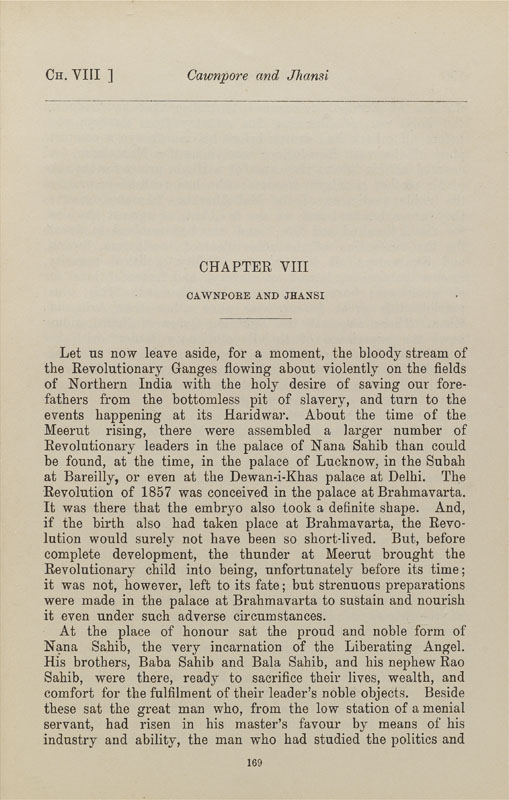Ch. VHI ]
Cawnpore and Jhansi
CHAPTER VIII
CAWNPORE AND JHANSI
Let US now leave aside, for a moment, the bloody stream of
the Revolutionary Ganges flowing about violently on the fields
of Northern India with the holy desire of saving our fore¬
fathers from the bottomless pit of slavery, and turn to the
events happening at its Haridwar. About the time of the
Meerut rising, there were assembled a larger number of
Revolutionary leaders in the palace of Nana Sahib than could
be found, at the time, in the palace of Lucknow, in the Subah
at Bareilly, or even at the Dewan-i-Khas palace at Delhi. The
Revolution of 1857 was conceived in the palace at Brahmavarta.
It was there that the embryo also took a definite shape. And,
if the birth also had taken place at Brahmavarta, the Revo¬
lution would surely not have been so short-lived. But, before
complete development, the thunder at Meerut brought the
Revolutionary child into being, unfortunately before its time;
it was not, however, left to its fate; but strenuous preparations
were made in the palace at Brahmavarta to sustain and nourish
it even under such adverse circumstances.
At the place of honour sat the proud and noble form of
Nana Sahib, the very incarnation of the Liberating Angel.
His brothers, Baba Sahib and Bala Sahib, and his nephew Rao
Sahib, were there, ready to sacrifice their lives, wealth, and
comfort for the fulfilment of their leader's noble objects. Beside
these sat the great man who, from the low station of a menial
servant, had risen in his master's favour by means of his
industry and ability, the man who had studied the politics and
169
|








